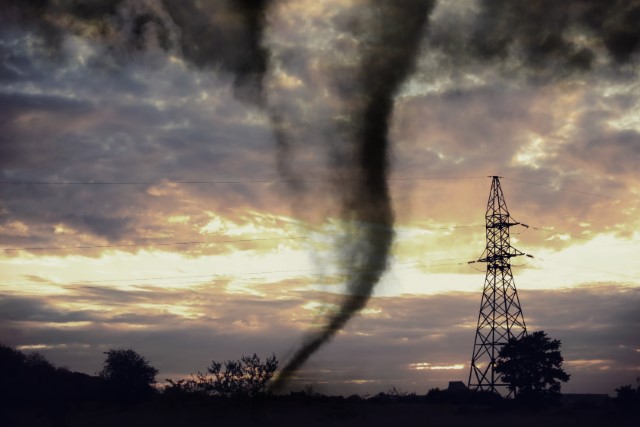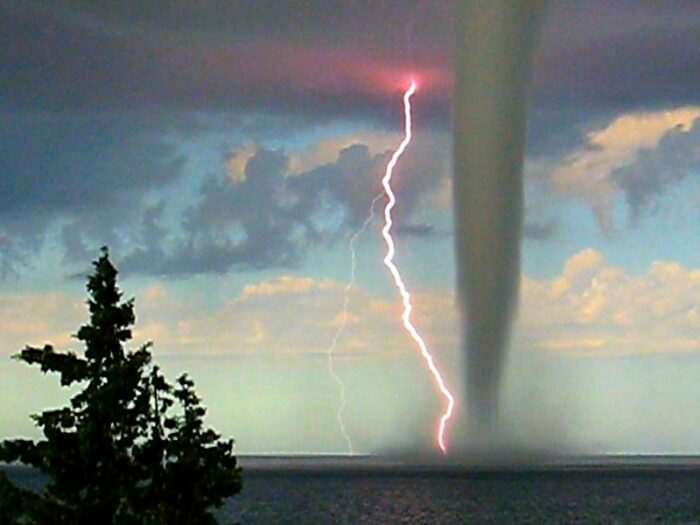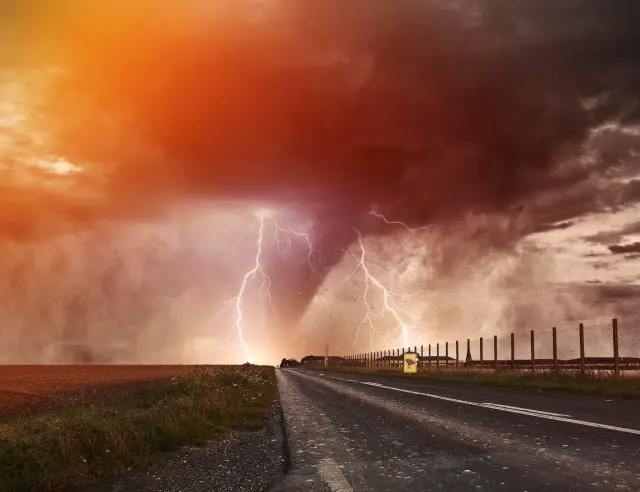Why Does It Get Quiet Before a Tornado? My Take on The Calm Before the Storm
Tornadoes are among the most imposing but destructive natural phenomena on Earth. When unleashed by nature, tornadoes cause a scene of chaos and destruction. However, before they begin, there is often an eerie calm, a silence that precedes the storm. This phenomenon, often known as the “quiet tornado,” has long baffled meteorologists and fascinated the public. In this article, we’ll explore the science underlying this hushed interlude and examine the causes of the calmness that precedes them. Read on for the specific answer to why does it get quiet before a Tornado, to my understanding, the science says that it’s due to the way that Hurricanes and Tornadoes interact and suck moisture and other molecules out of the atmosphere.
What is a Tornado?
A tornado is a violent, rotating air column extending from a thunderstorm to the ground. It sweeps along the land, leaving a path of destruction. Tornadoes range in size and intensity from tiny,  weak tornadoes to enormous, devastating ones that may wreak great destruction.
weak tornadoes to enormous, devastating ones that may wreak great destruction.
How Does a Tornado Develop?
A tornado originates within supercell thunderstorms, distinct from having rotating updrafts called mesocyclones. When certain atmospheric conditions align, this whirling updraft tightens and forms a tornado. This vigorous spinning produces the tornado’s fierce winds, frequently exceeding 300 mph. Also, supercells have an organized structure that combines temperature and pressure imbalances, fueling the tornado’s violent winds.
The Quiet Tornado Phenomenon
It is common for witnesses to report a weird stillness just before a tornado touches down. This calmness contrasts starkly with the chaos and noise caused by the tornado. Let’s look at why this occurs.
The Role of Air Pressure
The drop in air pressure plays a crucial role in the intriguing “quiet tornado” phenomenon. As a tornado approaches, the storm’s strong updrafts become more intense, resulting in a quick and significant drop in atmospheric pressure at ground level. This rapid decrease in atmospheric pressure can evoke a peculiar sensation of unease and discomfort, often accompanied by the eerie silence that people describe before a tornado strikes.
This happens because air naturally flows from places with higher pressure to those with lower pressure. When a tornado occurs, the storm’s fierce updrafts produce a low-pressure area close to the Earth. This low-pressure area, combined with other atmospheric elements, can cause the air to seem unusually calm.
Supercell Characteristics
To comprehend the phenomenon of this silence preceding a tornado, one must also examine the distinctive traits of supercell thunderstorms, which are the breeding grounds for these destructive twisters. Supercells exert an unmatched influence on their surroundings, shaping the silence that seems inappropriate in the face of impending chaos.
Supercells as Dominant Weather Features
Before a tornado forms, the supercell storm commands the atmospheric stage. Known for their powerful updrafts, these enormous thunderstorms dominate the terrain, controlling the weather patterns in the region. Tornadoes begin to form inside this dynamic supercell environment.
| Related Posts |
|---|
Roaring Rainfall
Supercells are incredibly good at producing rain; when they develop, they release torrents of it. This flood, which is frequently heavy and relentless, envelops the area with a wall of water. The sheer intensity of this rainfall can drown out the ambient sounds of the natural world, momentarily replacing them with a soothing stillness.
Sound and Silence
The quiet tornado phenomenon can also be attributed to the intricate interaction between the terrain and the tornado’s strong winds.
When a tornado is about to touch down, sound waves can temporarily be disrupted in addition to air movement. This interruption resembles a momentary reprieve before the storm unleashes its wrath. As a result, an eerie stillness permeates the area immediately before the tornado sweeps everything in its path into turmoil.
Acoustic Shadow
The development of an “acoustic shadow” is another component that contributes to the quiet tornado phenomena. As the tornado forms and intensifies, it generates a significant amount of noise, including the infamous roar often associated with tornadoes.
However, due to atmospheric circumstances and wind patterns, this noise might not always be audible to observers far from the tornado’s core, giving the impression of stillness.
Wrapping Up
The quiet tornado is a captivating aspect of these destructive natural phenomena. Even though it may seem paradoxical, the science behind it is based on the properties of supercell thunderstorms, air pressure, and acoustic shadow. Understanding the quiet tornado phenomenon is vital not only for scientific curiosity but also for matters of safety. Recognizing the signs and being prepared for severe weather events like tornadoes is crucial for minimizing their impact on our lives.
Sources:
https://weather.com/safety/winter/news/2019-10-15-how-handle-driving-black-ice
Disclaimer: The opinions and documentation contained within this article and on this blog are the sole property of tornadoxpert.com and are not to be copyrighted or reproduced in any manner, else legal action within the rights of the United States legal code could be use to obtain recompense. All articles and blog posts are the sole opinions of the writers of the blog, and are not necessarily in line with what exactly will work for you. Also, from time to time, certain links on this website will be used to generate affiliate commissions, in order to support the health and growth of our website, health and business.




